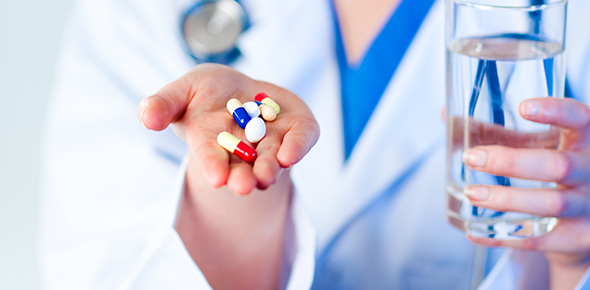Related Flashcards
Related Topics
Cards In This Set
| Front | Back |
|
Diabetes Mellitus
|
Group of diseases characterized by high blood glucose concentrations resulting from defects in insulin secretion, insulin action, or both.
|
|
Insulin
|
A hormone produced by beta cells of the pancreas that is necessary for the use or storage of body fuels; essential to type 1; may be needed to store glycemia in type 2; onset, peak, duration; inhaled types; insulin pump
|
|
Hyperglycemia
|
Elevated blood glucose levels; develops on when greater than 90% of the secretory capacity of the beta cells mass has been destroyed; first exhibited as elevation of postprandial bg
|
|
Impaired Glucose tolerance levels (IGT)
|
140-190 mg/dl; 2 hours postchallenge glucose; plasma glucose elevated after 75 g glucose load, typically 8-24 hrs before
|
|
Pre-diabetes
|
Stage of impaired glucose homeostasis that includes IFG and GT. People with pre-diabetes have IFG, IGT, or both.
|
|
Impaired fasting glucose levels (IFG)
|
Fasting plasma glucose 100-125 mg/dl; fasting plasma glucose above normal level
|
|
Type 1 Diabetes
|
People affected often lean, excessive thirst, frequent urination, significant weight loss. Pancreatic beta cell destruction, usually leading to absolute insulin deficiency and resulting in hyperglycemia, polyuria, polydipsia, weight loss, dehydration, electrolyte distrubance, and ketoacidosis. Two types: immune mediated and idiopathic
|
|
Idiopathic type 1; immune mediated type 1
|
Forms of the disease that have no known etiology; falls most with blacks or asian origin; cause of the beta cell function loss unknown
beta cells destroyed by autoimmune process |
|
Genetic risk factors caused from
|
|
|
Antibodies identified as contributing to destruction of beta cells (4)
|
Islet cell ab's; insulin auto-ab; antibodies against islet tryronsine phosphatase (IA2); autoantibodies to glutamic acid decarboxylase (GAD) (protein on surface of beta cells)
|
|
GAD antibodies
|
Glutamic acid decarboxylase; a protein on the surface of beta cells. Appear to provoke an attack by the T cells, which may be what destroys the beta cells in diabetes
|
|
Honeymoon phase
|
Period after initial diagnosis of type 1 diabetes when there may be some recovery be beta cell function and a temporary decrease in exogenous insulin requirement. During, exogenous insulin requirement decrease dramatically for up to 1 year
|
|
Type 2 diabetes
|
Results from: combo of insulin resistance and beta cell failure; inadequate insulin levels to overcome insulin resistance causing hyperglycemia. Formerly NIDDM
|
|
Insulin resistance
|
Decreased tissue sensitivity or responsiveness to insulin; first demonstrated in target tissue (muscle, liver, adipose cells); in fat cels, leads to lipolysis and an elevation in circulating free fatty acids
|
|
Postprandial Blood Glucose
|
After a meal bg; bg levels 1-2 hours after eating
|








